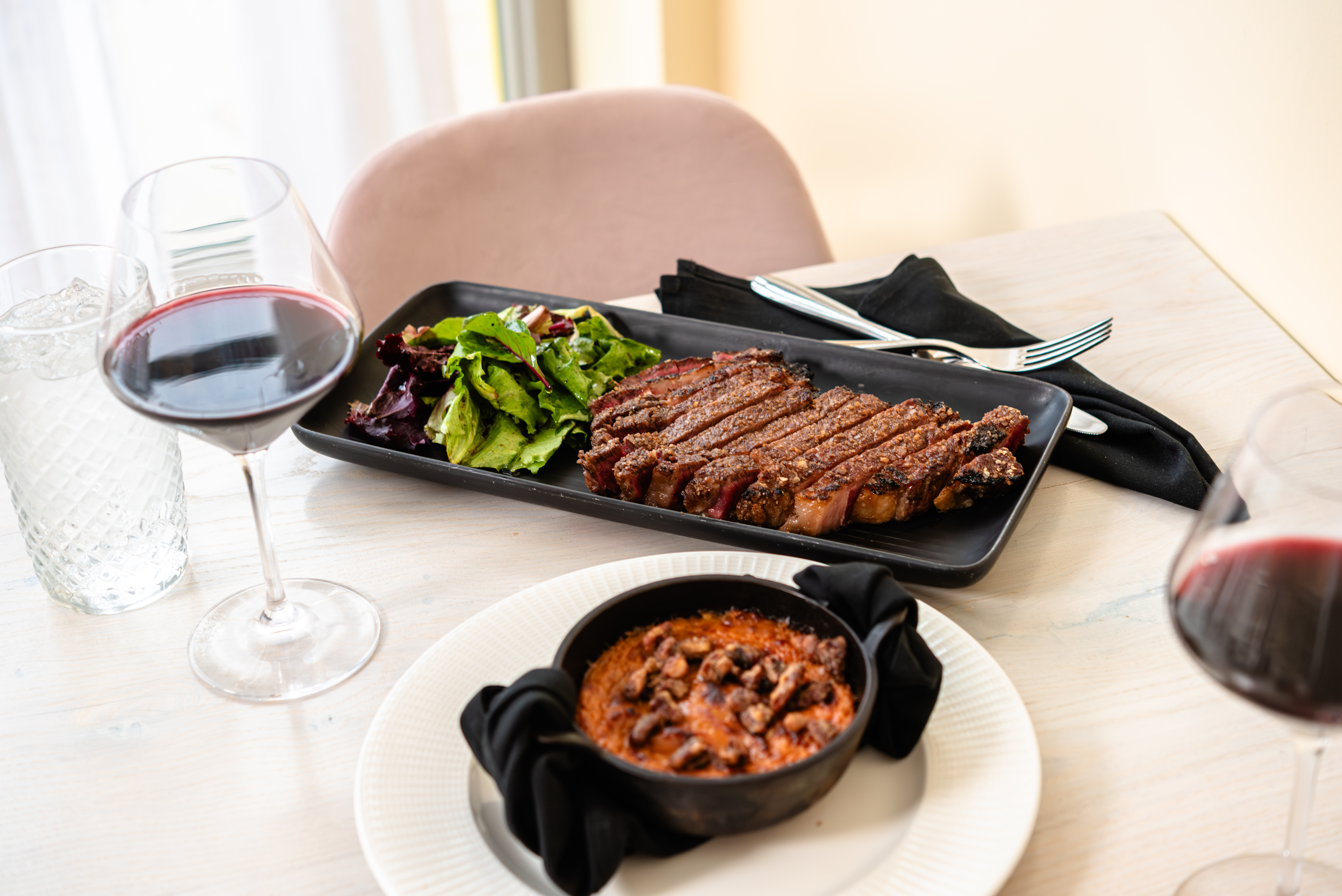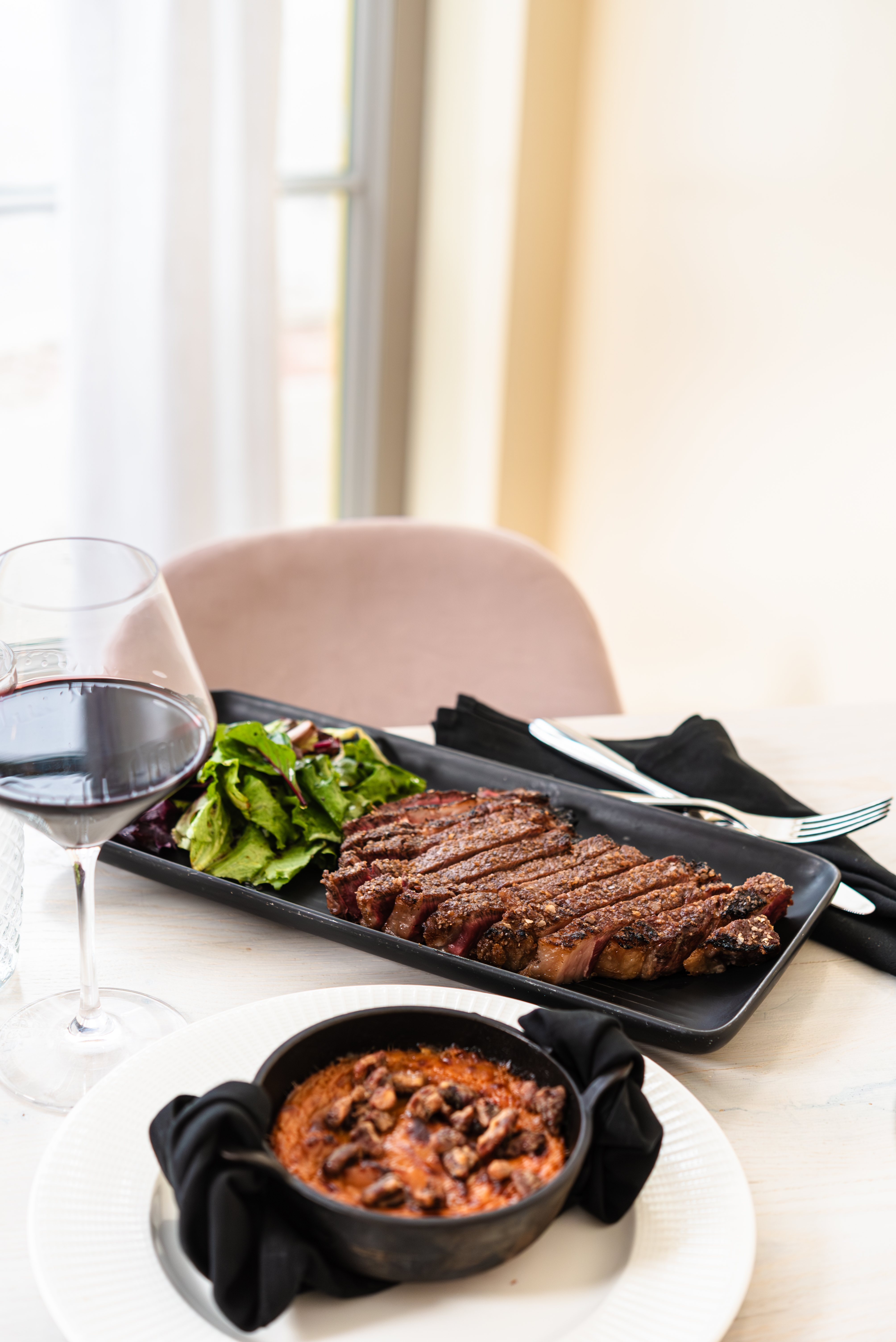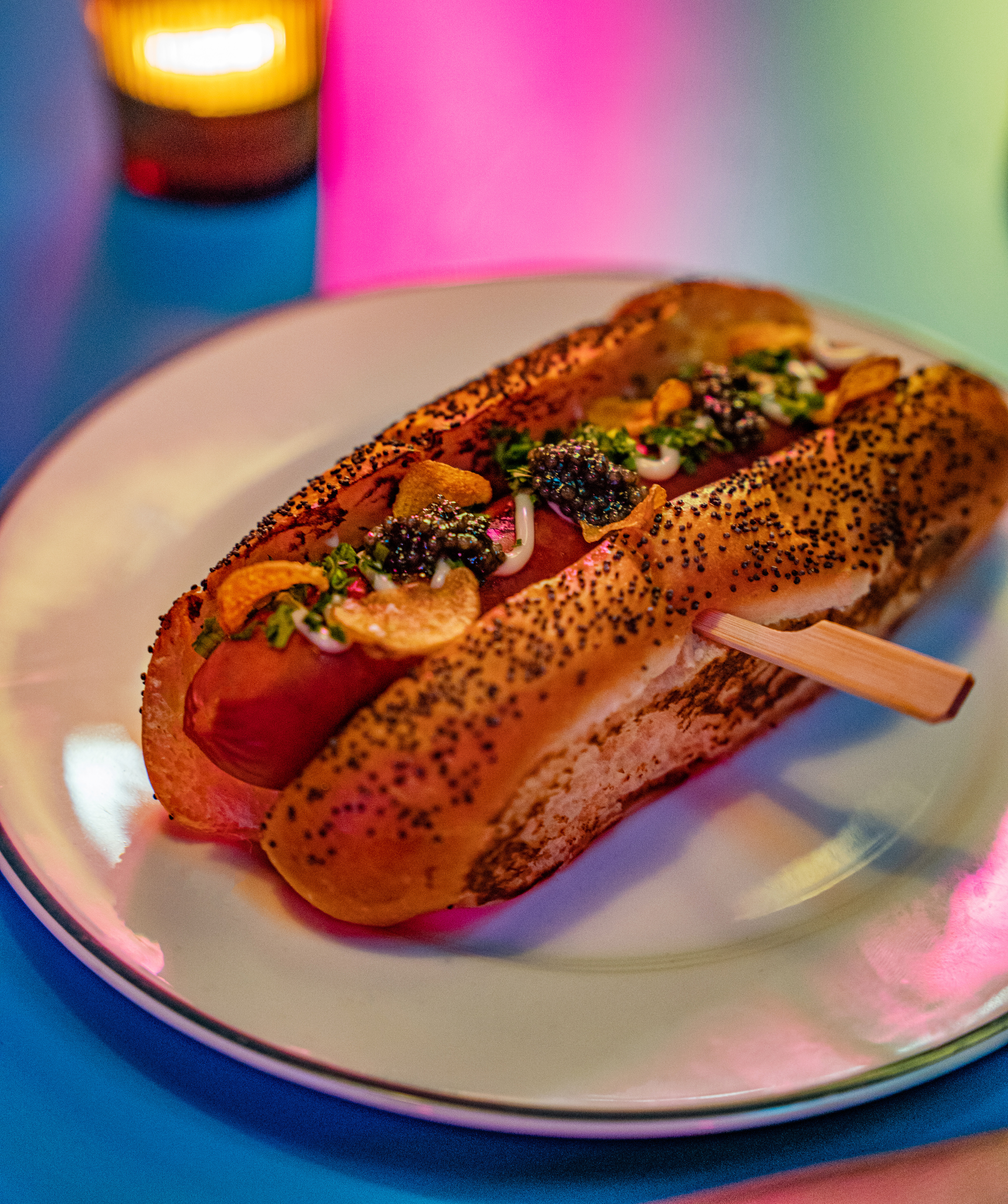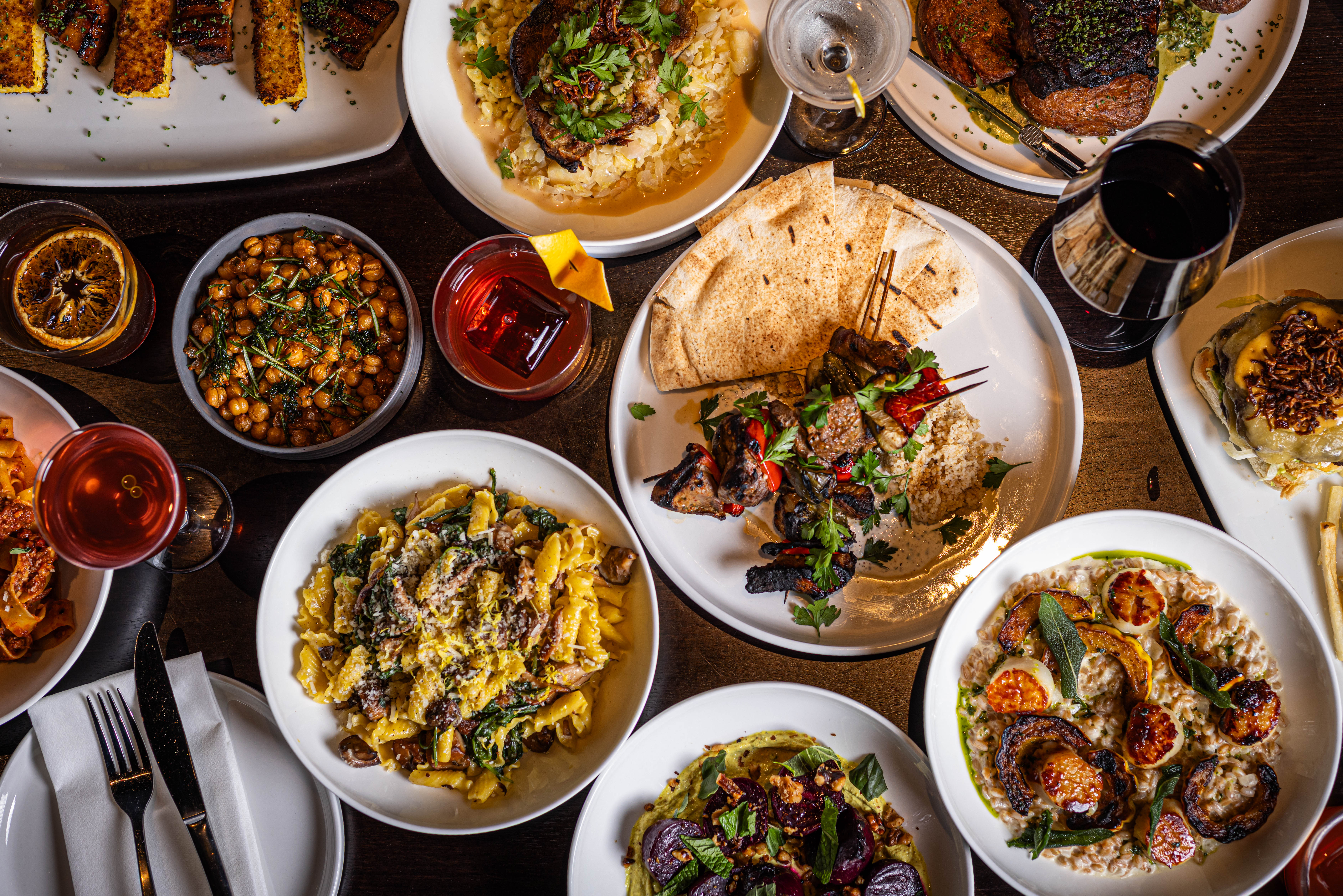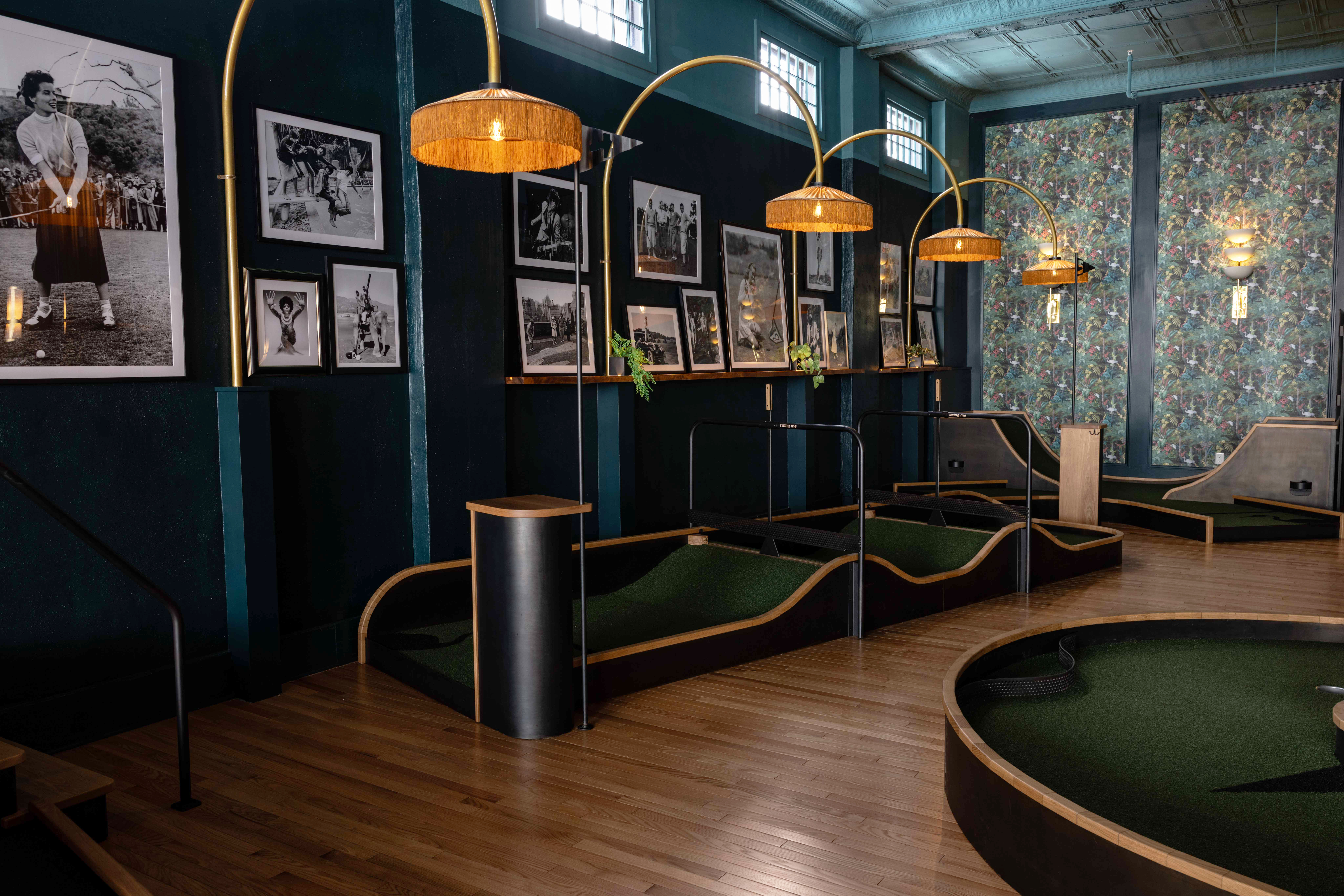The Lola Moment
by Michael Ruhlman | Oct. 31, 2006 | 5:00 AM
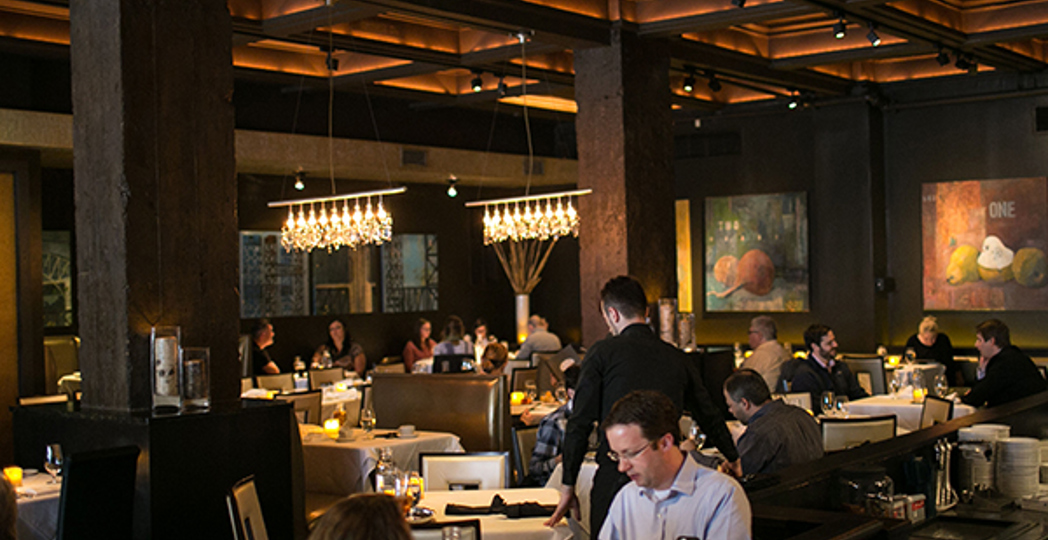
Dr. Joseph Ripepi and his wife, Beth, considered themselves lucky on many counts Friday, Sept. 22.
Beth's sister had taken their four kids, ages 8 months to 6 years, so these busy Lakewood parents could stay downtown for the weekend and have some time to themselves.
They were thus at leisure to wander up East Fourth Street in search of a good place to eat. They passed House of Blues and Pickwick and Frolic and toward the end of the block, saw through plate glass windows a busy bar and a sea of candlelit empty tables unfamiliar to Fourth and Prospect.
They didn't know if the restaurant was open. It had been scheduled to open the previous winter, then the previous spring, but had remained dark.
Nor had the Repepis read the blurb in that day's Plain Dealer announcing that it was, in fact, opening tonight, but warning that the restaurant was taking no more reservations and not accepting walk-ins. So they walked in.
Carrie Neale, the hostess, said, "For two? Sure."
Joe and Beth Ripepi, serendipitously, would be the first diners at the new Lola, the hottest seats in town at what had been called that day, the most anticipated restaurant opening in Cleveland in two decades.
"We've known about Michael Symon since the Caxton Cafe," Beth says, clearly thrilled to have the table.
The Caxton Cafe a few blocks away on Huron, had been where Lola's chef-owner, Michael Symon, first earned respect among Cleveland foodies for his cooking, then citywide fame after a 1995 cover-story in The Plain Dealer Sunday Magazine proclaimed him Cleveland's hottest chef. He was 26 and from then on never gave critics reason to doubt this early assessment.
"That guy came down and saved us," says Michael Sanson, editor of Restaurant Hospitality magazine, of Symon's impact on the city's restaurant scene.
Were Symon to hear that comment, he'd say something like, "He's blowin' smoke, Ruhlman." Or, "I'm just a bald guy from Cleveland trying to make a buck!" Then he'd laugh and return to the kitchen.
I first introduced myself to Symon at the Caxton Cafe.
Before heading to the Culinary Institute of America in upstate New York to write a book about learning to cook, I needed some basic information, and knew that Symon had been a 1989 graduate of the school.
He let me hang out in his kitchen, where he and one other cook put out 180 plates in two hours, standing in approximately five square feet of space, one and a half plates a minute from a kitchen crammed with sideways servers picking up food. That's a lot of plates fast, and not hash either — they were hottest-food-in-the-city plates.
By the time I'd written my book on learning to cook at the CIA, Symon had opened Lola in Tremont with his partner and now wife, Liz Shanahan, and had earned a share of the national spotlight as one of Food and Wine's 10 best new chefs.
I was writing another book on chefs, asked if I could hang out at Lola for a while to see what this Cleveland boy was doing that merited national ranking, and I featured him in the book, The Soul of a Chef.
We've become friends and I no longer write about him.
Though others do. The most prominent has been Frank Bruni, restaurant critic for The New York Times. His review of Symon's Manhattan restaurant Parea, a contemporary Greek restaurant which he runs with a Lola veteran, executive chef Jonathan Sawyer, gave it two stars.
And in a September story, Bruni described the number of famed outsider chefs, such as Gordon Ramsay and Joel Robuchon, entering New York, and concluded with a comment about Symon, who is not an international celebrity opening in multiple cities, nor in Bruni's words "an untested visionary." Rather, he wrote, "He's an imported, established success. In other words, a true man of the moment."
Symon had taken his big, tatooed, Harley-driving, shaved-Cro-Magnon-headed frame and famous laugh to the toughest restaurant city in the world and smoked it.
So when the editor of this magazine asked if I'd consider writing about the opening of the new Lola, I knew it would be a great excuse to leave my office and hang out again with Symon and his big restaurant family — some chefs and managers have been with him since Caxton and I knew and liked them as well.
It also provided an opportunity to define the qualities of work, cooking and being a boss that have made Symon one of the most popular chefs in the city's history and a chef of national recognition who chooses to open and run businesses in his hometown even though bigger arenas are available to him.
The morning of Lola's opening, Frank Rogers is pumping out pierogies, folding the flour-sour-cream-chive dough around braised and shredded beef cheek.
"It's a good thing for Mike and Liz," he says of the day.
Rogers' career with Symon began as a dishwasher 16 years ago at Players in Lakewood, where Michael was a young cook [check]. In 1997, having risen to one of the lead cooks of Lola, Rogers says of himself, "I'm a Michael Symon lifer!"
And he is today a husband, father of two and chef de cuisine of Lola, which has hopes of being the city's best restaurant. "At Lola, when we started," he says, "it was just three of us back there."
Now Rogers, 36, will be overseeing a dozen chefs when Lola begins lunches in addition to daily dinner, and inspecting the food as it comes to the pass rather than cooking it.
"First day for business, it's fuckin' nuts," he says.
If Symon's affability and laid-back leadership helps him keep the best people, his reputation now allows him to bring in more talent from outside. To Rogers' right in the clean, bright basement prep kitchen is Cory Barrett, who is working on the maple-bacon ice cream.
Barrett, 26, arrived in Cleveland from Vegas where he'd been at Okada in the Wynn, having followed his boss, Takashi Yagihashi, from Tribute in Detroit. Derek Clayton, Lola's new sous chef, also hails from Tribute. Clayton is at the sink, his back to Rogers and Barrett, twisting the arms off two-dozen lobsters and inserting a wood skewer along their belly to keep the tail straight as they cook.
Clayton had been sous chef at Tribute, at the time Michigan's most highly respected restaurant. He arrived in Cleveland with his wife in time for Lola's scheduled opening — last May. Today, with cash at last about to flow into the Lola coffers guaranteeing payroll this month, he can grin and say, "First summer vacation I've had since high school!"
In addition to other staff already here but waiting, Symon brought five people to Cleveland only to have them wait for months for work. Symon lost only one chef, another from Tribute, who went to fire food and drink, Doug Katz's restaurant at Shaker Square.
Pastry chef Barrett worked at Lolita, before assuming the duties for both. Otherwise they bided their time and Symon gave them work when he could (or just money) so they had food and rent.
The toughest thing for chef de cuisine Rogers was fielding the weekly calls, month after month, from these chefs. All he could say was, "I don't know when we're gonna open, man."
Symon says he spent $125,000 on payroll for people not working at Lola during the year delay. "That's a year's profit," he says, seated at the new Lola bar.
Unlighted, the thin slab of Italian alabaster is milky and veined; tonight, the bulbs beneath it will illuminate it a fiery orange.
A glassed-in wine cellar, rising to the ceiling the entire length of the bar, holds about 1,800 bottles of a list Liz Symon says is a work in progress: Heavy in West Coat boutique wines, it includes many Italian and French as well, which she believes especially suit her husband's cooking.
Symon drags on a Camel Light. "Some of these people have been with me for years and years and years," he says. "What am I gonna do, lay them off?"
He was lucky enough to have, in addition to an unusually loyal staff (in an industry famous for perpetual turnover), several sources of income: Lolita; food and beverage management for the Elyria Country Club, now run by ex-Lola chef John Seeholzer; the New York restaurant (which is a partnership with New York restaurateurs); his work as spokesman for Vitaprep and Calphalon and other opportunities afforded by his celebrity.
"Otherwise we'd be broke," he says.
Matt Harlan appears at the restaurant carrying a box of frozen fries he means to take to Lolita, where he's the chef de cuisine. I sense he simply wants to be a part of this opening day.
Matt had been a beginner cook when I first met him — as he himself will tell you, he didn't even know how to make a mayonnaise. Now he's filled out, has married and become one of the company's leaders. "Don't forget about us," he tells Symon before heading out the door for Lolita.
"How am I gonna forget you?" Symon shouts. "I talk to you 70 times a day!"
And then he lets his trademark laugh rip. It fills the room. (Symon won't confirm rumors of the existence of bottle openers that, when used, broadcast this laugh, but Symon fans claim to have seen them going on eBay in the low-two-figure range.)
Perhaps partly because of the delay, Symon and crew are extremely organized. So opening day is calm.
Carrie Neale mans the continuously ringing phone. "Everyone is so excited that we're finally opening," she says.
A city building inspector shows up midday asking to see permanent permits (not the temporary ones they now possess), requiring a quick visit from the building's landlord and developer (and owner of most of the real estate on either side of this street), Rick Maron, cofounder and partner of MRN Ltd.
Otherwise there's not a false note or glitch in the opening of this restaurant, whose beginnings stem from an October 2004 conversation between Symon and his friend Chris Ferchill, then a leasing agent for TerreMark, who in effect brokered the deal between Symon and MRN. Michael and Liz had been open to new opportunities at the time and their first thought was to create Lolita, a Mediterranean bistro now in place at the Tremont location, on East Fourth. But then they said to themselves, Lola would have been 10 years old in March. How long is the life of a restaurant? How long can we keep up this pace?
They decided instead to build a new restaurant for Lola and give the old space a makeover to open as Lolita. Delays at Lola were caused by construction — some owing to the age of the building and unforeseen complications — as well as haggling with the Cleveland Historical Society, which had demanded that the facade of the building maintain the original's five doors ("A restaurant can't have five doors!" Symon says), and their own difficulty securing $800,000 in loans for construction. (Symon's company and MRN are in effect splitting the cost of the $1.8 million restaurant.)
With Lola's opening, the vision at last comes to fruition.
And it's about more than just a restaurant. In the same way that Lola brought countless Clevelanders to the Tremont neighborhood and helped to justify numerous other restaurants opening there, the developers don't hope — rather, they feel certain — that Lola's presence on East Fourth Street guarantees traffic. And judging from the weeks to come, with the restaurant booked solid and a three-deep bar all through the night, it would be hard to argue.
Doug Petkovic, a longtime Symon friend who became a business partner in 2004, checks in on his way to the bank to get cash for tonight's opening. (When Michael and Liz opened Lola in 1997, they had exhausted all their accounts and, in order to have a few hundred dollars in the till for opening night, Michael had to borrow cash from his father by pretending he didn't have time to get to the bank.)
Petkovic has become the third leg of this business, the piece that allows it to operate very efficiently. "Doug is really good at running a big staff," Symon says. When Petkovic's previous restaurant, Theory, failed, he joined forces with Symon and now in effect runs the operations of the company; Michael leads the kitchen and is the face and personality of the business, and Liz Symon, 44, manages design, deccor, front of the house and the wine.
"It feels kind of like the first opening of Lola, exciting," Liz says, as she organizes bottles of wine in the floor-to-ceiling racks. "But different — I'm 10 years older."
Because food is the focus of a restaurant and because Symon is such an exuberant personality, attention tends to focus on him, but for a long time now I've wondered if the influence of Liz Symon has been underplayed. Her urban style and eye for eccentric accessories sets the tone of the room, which is perfectly suited to downtown Cleveland.
With designer Rick Lalli and artist Chris Shramm, she has created an extraordinarily sophisticated look in the spacious room, with funky details (like the glass crystals strung over lights above some tables), rich urban tones of deep reds and browns of the walls and stained cement beams. (The building, which used to house Otto Moser's, a Cleveland restaurant institution, has good culinary karma.)
In many ways the new Lola is set up exactly like the original Lola — with a main platform, secondary dining area, and open kitchen and a stairway in back — only three times as big at roughly 7,000 square feet. And this Lola, like the Symons, has matured.
The energy, sense of welcome and fun that defined the Lola in Tremont is not toned down, rather there's an additional hard-to-put-your-finger-on finesse and elegance that was not part of the original, from the look of the place to the look at taste of the dishes. It's matured, it's uptown, it's come into its own.
By three o'clock, the restaurant has filled with servers buffing glasses, folding napkins, removing menus from menu holders amid other chores called "sidework." (On Tuesday and Wednesday, Lola invited about 60 then 80 friends and family, respectively, to be their guest for dinner. "Friends and Family" meals are dress rehearsals for all staff, a way to work out any kinks before paying customers arrive. If these had been a disaster, Symon could have held off opening until problems were fixed, but they went smoothly.)
In the kitchen, several chefs labor over final preparations that now fill the long flattop of the $130,000 Garland range: polenta as well as a sauce — pork demi-glace with smoked chilies and lime juice — for the smoked pork chop; truffle beurre rouge for the ribeye steak; the squab sauce, chicken-stock-based fortified with roasted squab bones, five spice powder, orange juice and orange zest; the lamb sauce, enhanced with roasted bell peppers and garlic; the corn chowder for the smoked walleye croquettes, and the beer and cheddar soup, made from Wisconsin cheese and Great Lakes Edmund Fitzgerald, served with foie gras sausage.
At 4 p.m., when the bar opens, servers light the candles on the 32 tables. Liz, seated, and Petkovic, standing on the seat, work to adjust the spots on the two raised banquettes on the south wall.
At 4:30, Petkovic calls tonight's 15 servers who take seats in the secondary dining area next to the open kitchen for "Q time," alternatively standing for question time or quality time, the most important part of the night, Petkovic believes. The pregame gathering to go over all questions sets his servers up for a successful night.
"Take notes, listen, ask questions," he tells them, then calls Symon over to talk about the food they're not yet familiar with: the plateau de mer, a three-tiered plate holding a variety of shellfish and sauces that Symon is calling the seafood tower, and the lobster entree, butter-poached tail with a lobster sausage and a rosemary beurre blanc.
"Hey, Powder," Symon calls to sous chef Derek Clayton who's at the stove, "What's the portion cost on the lobster?"
Powder tells him 20 bucks, and Symon says, "The lobster entree will be $39."
"We also have the amuse-bouche tonight," he says, "which will always remain the same. It's smoked salmon mousse in a shot glass. Hey, Jimmy, will you grab me one of the shot glasses of smoked salmon mousse?"
Timmy hands it over the counter to Symon, who holds this example of the first taste all diners will receive tonight for the servers to see. "It's the house smoked salmon, sweated shallots, touch of coriander, lemon juice, cream, topped with horseradish creme fraiche. And that's topped with diced smoked salmon, pickled shallots and chives."
There are a few questions, the last of which is, what if the customer doesn't like it — is there an alternate?
No, Michael says, adding, "Tell 'em if you don't want our gift, too bad!" He laughs. "Doug will tell you a nice way to say that."
The charcuterie tonight is a lamb sausage, he continues, the seviche is scallop tossed with lime juice, coconut milk, pickled jalapeno and cilantro, and he makes sure they know that seviche indicates that the fish is raw, but in effect cooked by the acid.
There will be no soup of the day, if you don't see your food 10 minutes after you've fired it, let us know, Symon says, we're aiming for 4 to 6 minutes from when it's fired.
"Any food questions before I get back in the kitchen?" he says finally, before handing the meeting back to Petkovic who will finish it by 5 p.m., the official opening.
The bar has already filled — radio host John Lanigan and Marlin Kaplan, chef-owner of One Walnut, among them. But no tables have been seated.
Nervous about taking too many customers too early, Symon "thinks" he may have told Plain Dealer reporter John Long that they weren't taking more reservations or accepting walk-ins, which Long reported in that day's paper, to Petkovic's consternation. "Where did he get that?" Petkovic says to Symon across the pass.
Symon looks down, wipes his cutting board.
"I do not want to be busy the first two nights," Symon says later, adding, "The first week, I just want to break even."
And they aren't busy. They've been so careful about accepting reservations, and, with everybody champing at the bit to begin work, they are completely prepped out and ready to roll. There's almost too little to do.
At 5:45 Dr. and Mrs. Ripepi are escorted across the platform and take their seats at the back banquette, Table 2.
They order the oysters baked with shallot, bacon, watercress and Pernod; the beef cheek pierogies with sauteed mushrooms, and split an arugula salad with greens from the Chef's Garden in Huron, dried cherries, goat cheese, spiced walnuts and a red wine vinaigrette.
For entrees, they order the halibut with oven roasted tomatoes and a nicoise olive tapenade along with the hanger steak with sauce made with balsamic vinegar and coffee beans.
And for dessert, chef Barrett sends up, compliments of the chef for being the first table seated and the couple's celebratory situation this weekend, a warm chocolate cake with a malted creme Anglaise, warm blackberries and an ice cream made with Great Lakes stout, along with a slice of amaretto cheesecake.
Lola is open.
The following day, Petkovic says, "One of the best openings I've ever had," saying that a great staff had made it easy. They seated 116 people, one complete turn in the 115-seat restaurant, and brought in a little more than $9,000.





